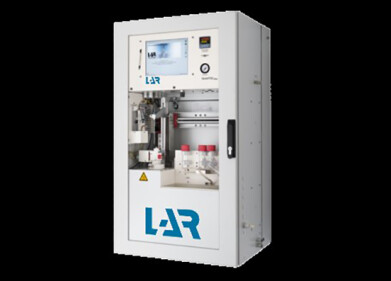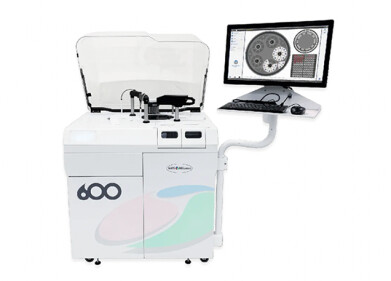Wastewater analysis
A Simple Guide to Micropollutants - Types, Sources & Removal
Jun 07 2022
The term micropollutant has gained significant traction among scientific circles in recent years, even infiltrating our mainstream media and affecting governmental policy. Though it might sound like a vague and confusing piece of jargon to those unfamiliar with it, it simply refers to substances (both organic and synthetic) which are emitted into the environment in small concentrations as a by-product of household, commercial and industrial processes.
Micropollutants encompass a wide variety of heavy metals, chemicals, hormones and other substances, many of which are naturally occurring and do not cause issues for humans, animals or plants in trace amounts. However, they are also extremely resilient and do not degrade easily in nature, meaning they can bioaccumulate over time. Increased anthropogenic activity in the last 20 years has contributed to an imbalance in micropollutant concentrations in our air, soil and water, causing potentially disastrous repercussions now and in the future.
What are the main types of micropollutants?
As a catch-all term which encompasses a wide variety of substances in small concentrations, micropollutants are difficult to define or pigeonhole. Nonetheless, they can be subdivided into the following broad categories:
- Pharmaceuticals. The average European consumes 48 packets of pharmaceuticals each year. Many of these can be bought over the counter without the need for a prescription, increasing their accessibility. Although the body does absorb some of the chemicals contained with them, many pass through the digestive system and are secreted back into the environment via urine. Meanwhile, other pharmaceuticals may be disposed of after passing their sell-by date, entering the environment as a result.
- Heavy metals. Many heavy metals are a completely natural part of the environment and some of them, including iron and zinc, are actually essential to the human body’s normal functioning. However, anthropogenic processes and products can contain excessive amounts of these substances, which are leached into the environment upon disposal or as a by-product of their use. Among the most common heavy metal micropollutants, there are arsenic, cadmium, chromium, copper, iron, lead, mercury and zinc.
- Cosmetics and personal care products. Many household items which we use every day, such as shampoos, skin creams and toothpastes, contain a cocktail of chemicals, hormones and other persistent elements which do not disappear once they have been washed off our bodies and down the plughole. Research shows that for every million Europeans, an average of 17 tonnes of dichloroethane, 3 tonnes of polycyclic aromatic carbons (PAHs) and 157 tonnes of dichloromethane are discharged into the environment.
- Fertilisers, herbicides and pesticides. The world’s population continues to grow at an alarming rate; by 2050, there are projected to be almost 10 billion people on the planet. To feed those hungry mouths, the agricultural industry must rely on organic and synthetic additives such as fertilisers, herbicides and pesticides to maximise crop yields. However, these can infiltrate soils and seep into underground aquifers, or else be washed away by heavy precipitation into rivers, lakes and oceans.
Of course, that is by no means a complete list of the micropollutants present in our environment, since there are a wide variety of other chemicals, hormones and oestrogens that bioaccumulate in air, soil and water. It does represent an introduction to some of the most common artificial and organic micropollutants, however.
Where do micropollutants come from?
As mentioned above, most micropollutants are emitted into the environment as a by-product of human activity. Agricultural products leach into the earth and eventually into water sources when sprayed on crops; heavy metals and other chemicals infiltrate the natural world during industrial processes; and many more micropollutants escape into the environment through the improper disposal of goods and products.
One of the biggest sources of micropollutants, however, is wastewater. When pharmaceuticals are ingested and secreted by us, and cosmetics, personal care products, chemicals and heavy metals are washed down the drain, they are sent to a wastewater treatment site. However, conventional methods deployed by most plants are inadequate to remove micropollutants in wastewater, meaning they can re-enter the natural environment unmolested.
Where are micropollutants found?
Due to these phenomena, micropollutants can now be found throughout the natural world. They are emitted into the air we breathe, they land on the soil in which our crops grow and they seep into the rivers, lakes and streams from which we draw drinking water. It’s not just surface water that is compromised, either; over time, they can leach into groundwater, infiltrating the underground aquifers that provide much of our water supplies.
In 2018, for example, just 40% of surface water bodies were found to have acceptable ecological status, while a quarter of groundwater reservoirs had dangerous levels of at least one micropollutant. The almost ubiquitous nature of these micropollutants makes them a real cause for concern and it’s for this reason that scientific research into their causes and effects – as well as micropollutant removal – has stepped up in recent years.
Why are micropollutants dangerous?
Perhaps the most concerning aspect of micropollutant contamination is the fact that it’s not going to improve any time soon. Many substances which fall under the micropollutant umbrella do not readily break down in the natural world and cannot easily be removed from wastewater treatment effluents, meaning concentrations of them are only going to grow over time.
While they may be harmless in trace amounts, their ability to bioaccumulate does eventually upset the delicate nutritional balance of freshwater and marine ecosystems. What’s more, new emerging micropollutants (EMPs) are being released into the marketplace all the time. Because our knowledge of these substances is sorely lacking, we cannot be entirely sure on the long-term ramifications of their existence and increasing concentrations may be.
What are the effects of micropollutants on the environment?
Although research into the full extent of micropollutant bioaccumulation in water sources is ongoing, preliminary studies have revealed concerning results.
For example, agricultural products can have a massive impact on the nutritional composition of underwater ecosystems. Herbicides inhibit the growth of certain species like algae, while fertilisers encourage it. Neither outcome is desirable, since in the latter instance, eutrophication can occur, whereby the algae consumes more oxygen and blocks out more sunlight, depriving other organisms of those vital resources.
Elsewhere, certain chemicals, hormones and endocrine disruptors can play havoc with the internal organs and development of fish, crustaceans and mammals. Some species can experience stunted growth and abnormal tissue functioning, while feeding, migratory and breeding patterns are subject to disruption. In one particularly newsworthy example, some marine and freshwater organisations had their sexual organs changed from male to female after exposure to micropollutants.
What are the health effects of micropollutants on humans?
Even less is known about the effect of synthetic and organic micropollutants on humans when they are consumed in elevated concentrations. Because our drinking water supplies can become contaminated by these substances, this is a very real concern; one need only to recall the water crisis that afflicted the city of Flint in Michigan in the USA in 2014. Almost a decade on, the city’s water infrastructure has still not fully recovered.
The good news is that in small concentrations, drinking micropollutants does not pose life-threatening risks to human health. An individual exposed to such substances may experience minor symptoms such as headaches, nausea and fatigue, but these can be counteracted by using adequate home filtration systems. However, the effects of longer-term exposure can be far more serious, with micropollutants linked to organ damage, cancer and death.
How are micropollutants measured?
The fact that many micropollutants are emerging in nature means that the science is still catching up with how to quantify them comprehensively. Having said that, major strides have been made in wastewater analysis in recent years, with the digitization of the discipline allowing scientists and site owners to understand micropollutant concentrations in greater detail than ever before.
One of the biggest challenges involved in measuring micropollutants is the fact that different substances require different approaches. For example, ammonium cations can be accurately monitored using ion chromatography, while other sophisticated techniques are used to identify levels of heavy metals, pharmaceuticals and hormones. This means that industrial plants may be required to install a variety of different measurement systems onsite, though the legislation surrounding those obligations is still a work in progress.
How can micropollutants be removed from the environment?
Given that micropollutants do not easily degrade of their own account, it’s incumbent on water companies (both those involved in wastewater treatment and those involved in purifying drinking water supplies) to ensure that they deliver a product which is as free from contamination as it can possibly be.
Again, this is still an area of research which requires further work. Having said that, techniques for removing individual micropollutants do exist, but they are often prohibitively expensive – especially for businesses on the smaller side. What’s more, the fact that each micropollutant may demand its own removal process makes the whole endeavour that much more costly and challenging. As such, it’s currently unfeasible to expect that 100% of micropollutants will be removed from any water source, which spells trouble for the future bioaccumulation of these potentially damaging substances.
Digital Edition
IET 35.2 March
April 2025
Air Monitoring - Probe Sampling in Hazardous Areas Under Extreme Conditions - New, Game-Changing Sensor for Methane Emissions - Blue Sky Thinking: a 50-year Retrospective on Technological Prog...
View all digital editions
Events
May 06 2025 Nuremberg, Germany
May 10 2025 Karachi, Pakistan
May 11 2025 Vienna, Austria
May 11 2025 Seoul, South Korea
Salon Analyse Industrielle & Instrumentation
May 14 2025 Paris, France








_(4427399123)-(2).jpg)




.jpg)





